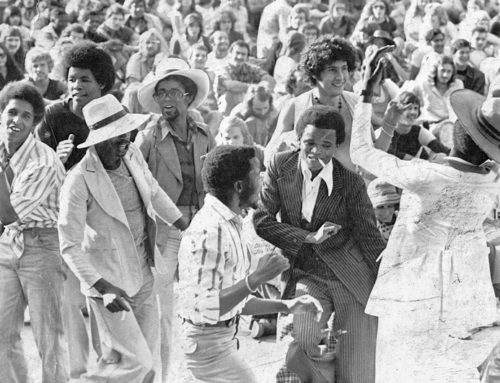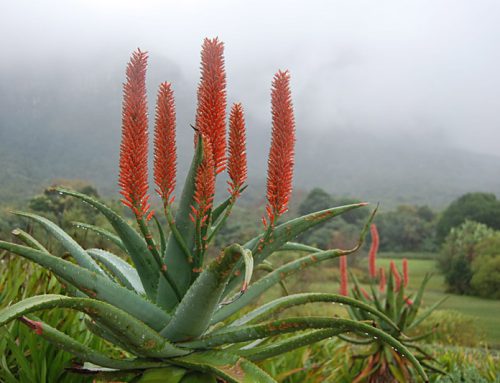 Would you rather be a hominid or a therapsid?
Would you rather be a hominid or a therapsid?
That is what I asked 20-year-old Barend Minnies as we stood in the Gats riverbed in Nieu Bethesda where 253-million-year-old therapsid fossils are embedded in the rocks.
Not any old fossils, they offer us the best record in the world of what life was like on Earth back then, 30-million years before the first dinosaurs appeared.
“Do I have to answer that?” he replied.
“Why not?” I asked.
“I really don’t know what life on Earth is about,” he explained. “Therapsids, dinosaurs, hominids, us…I know we are supposed to have evolved and are still evolving. Maybe we’ll evolve into robots. I don’t know. I’ll have to get some help from someone.”
Little did I know my question would trigger such existentialism in young Barend who is a fossil guide at the Kitching Fossil Exploration Centre, Nieu Bethesda in the heart of South Africa’s Great Karoo.
I tried to reassure him that if he had been a hominid or a therapsid he would not have concerned himself with such matters. They just went about their prehistoric days, foraging, eating, trying not to get eaten, and trying not to fall down holes.
“Life was simple before we started to wonder who we are,” I said.
“They still died,” Barend said.
This was true. Life was not eternal for hominids or therapsids, and quite a few of them met with an unfortunate end.
Take that poor Little Foot, for example. One moment he was a happy little hominid, whistling through the veld in the cradle of humankind, and the next moment he fell down a hole, plummeting twenty metres into a deep, dark cave.
He could not shout to his fellow Little Foots to throw him a rope; neither could he ask one of those friendly palaeo-anthropologists who spend so much time down there, to show him the way out. It must have been a horrible way to die, and be trapped there for 3.3-million years.
As for those therapsids, what a time they had! These giant, mammal-like reptiles once roamed the Karoo with not a thought in the world that their end was nigh.
The Karoo, back then, was a very different place to the semi-desert plains we know today. Kilometre-wide rivers flanked broad floodplains, similar to the Okavango today, and food and water was aplenty.
Little did they know that 251 million years ago, life would abruptly cease. One moment they were eating and chasing each other, and the next moment a tidal wave of mud swamped them in their tracks. They died where they stood. There was no time to grab their passports or a bottle of something to calm the nerves.
We still do not know what caused this extinction event, one of five that have occurred in the last 500 million years. It could have been a massive volcanic eruption or a meteorite that hit the planet, but wham! That was them, over and out.
“The greatest evidence in the world of this event is right here in this riverbed!” Barend explained. “I’ve got to think about these things because we get visitors from all over the world and they ask all sorts crazy questions. Not crazy questions like yours, but also crazy. And they do crazy things!
“Like this one geologist from the States who came here and said the only way to tell one rock from another is to chew them. He kept chewing rocks all along the riverbed. We had to make sure he didn’t chew up all our fossils.
“And this other guy…after we showed him the fossils he said we had painted them on the rocks and he wanted his money back.”
“We also get people who come on the fossil tour and listen to the whole story, and then ask us if it’s true,” added Barend’s fellow fossil guide, Charles Caesar who joined us in the riverbed.
“What can I say? I tell them maybe they should ask the donkey cart driver in the village if it’s true because he told me there were fossils in this riverbed long before I became a guide.”
Charles was far less existential than Barend on the subject of life and origins. So I put the question to him. “Would you rather be a hominid or a therapsid?”
“Neither,” he straightaway replied. “I would rather be a human being living today who found one of these fossils, so that it could be named after me and then my name would live on for a million years.”




